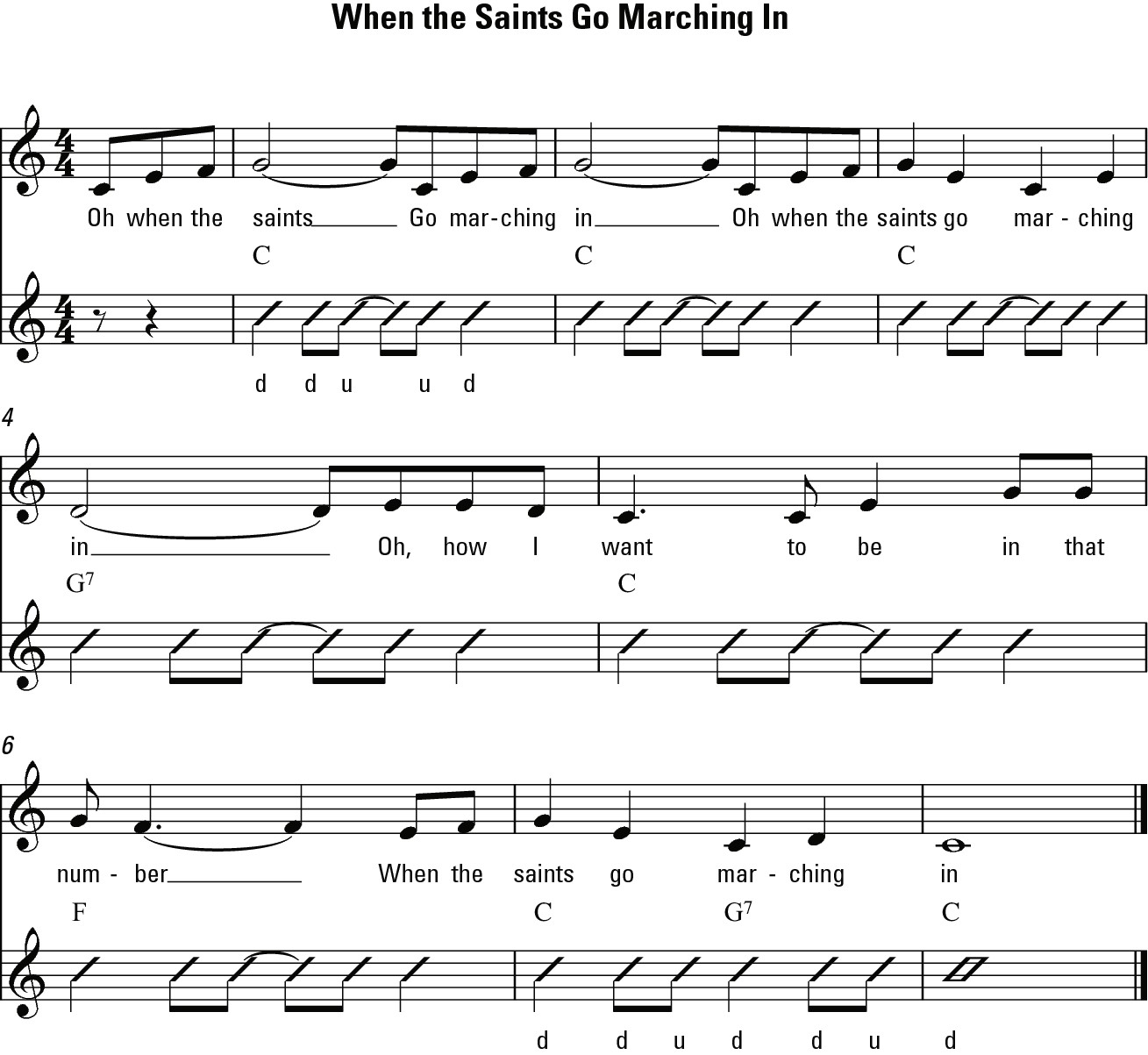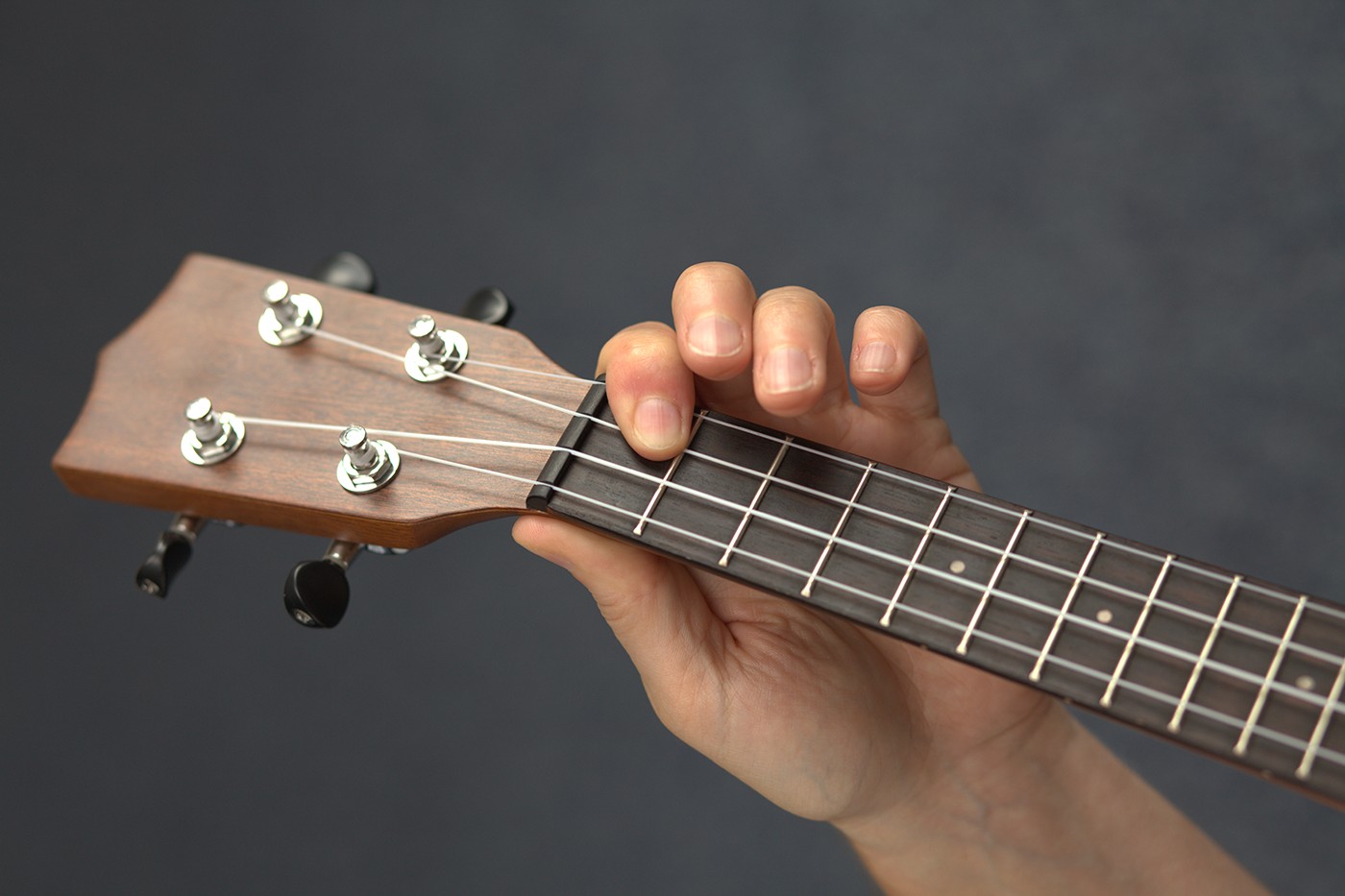Ukulele For Dummies (23 page)
Read Ukulele For Dummies Online
Authors: Alistair Wood

Each key also has a relative minor key that uses exactly the same chord set. In the case of C, the relative minor is A minor. Take a look at âWayfaring Stranger' (in Chapter 4). The song starts and ends with Am (which tells you that it's in the key of A minor) and all the chords it contains are in the C family.
Practising the Three-chord Trick: The IâIVâV Progression
The basis of almost all popular music is just three chords; whether the genre is rock, pop, blues, country, jazz or punk, these three chords are in there. If you can get your head and fingers around this fact, you have a strong basis to help you tackle almost any song you come across. In this section, I introduce you to the three-chord trick in C.
The chords in this trick are the I, IV and V of the family. So in the example of C, you can see (using the list in the preceding section) that:
 The I chord is C.
The I chord is C.
 The IV chord is F.
The IV chord is F.
 The V chord is G7.
The V chord is G7.
 This set of chords is very common, appearing in âI'll Fly Away' (turn to Chapter 4) and âWhen the Saints Go Marching In' (see Figure 6-2 and listen to Track 18).
This set of chords is very common, appearing in âI'll Fly Away' (turn to Chapter 4) and âWhen the Saints Go Marching In' (see Figure 6-2 and listen to Track 18).
 âWhen the Saints Go Marching In' uses the Swiss army strumming pattern (that I describe in Chapter 5), but watch out for the penultimate bar where the chord changes mid-bar.
âWhen the Saints Go Marching In' uses the Swiss army strumming pattern (that I describe in Chapter 5), but watch out for the penultimate bar where the chord changes mid-bar.
Figure 6-2:
âWhen the Saints Go Marching In' notation.

Fingering Barre Chords
A
barre chord
(pronounced âbar') is any chord where you fret more than one string with a single finger. They're represented in chord diagrams in the same way as conventional chords. The only differences are an arch over the strings that are barred and, if the chord is played a long way up the neck, a number at the top right indicating the fret at which the chord diagram starts (the C m chord diagram in the later Figure 6-25 contains an example of this).
m chord diagram in the later Figure 6-25 contains an example of this).
Going flat-out for B flat
The B (B flat) chord requires you to fret two strings with one finger. To start, you need to take your index finger and use the top third of it to fret both the E- and A-strings at the first fret, as shown in Figure 6-3. This helps you to practise the barre chord positioning.
(B flat) chord requires you to fret two strings with one finger. To start, you need to take your index finger and use the top third of it to fret both the E- and A-strings at the first fret, as shown in Figure 6-3. This helps you to practise the barre chord positioning.
Figure 6-3:
Initial position for a B chord.
chord.

When you can hold this fingering down so that both strings sound clearly when you play them, move on to the full B chord (shown in Figure 6-4). Bring over your middle finger to fret the C-string at the second fret. Then bring your ring finger over to fret the g-string at the third fret. When you're done, your hand should look like Figure 6-5.
chord (shown in Figure 6-4). Bring over your middle finger to fret the C-string at the second fret. Then bring your ring finger over to fret the g-string at the third fret. When you're done, your hand should look like Figure 6-5.
Figure 6-4:
Full B chord diagram.
chord diagram.
